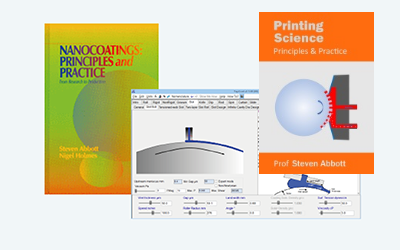Percolation
Quick Start
This isn't so much an app as a graph which tells you how much (or little) you need of a particle to reliably form a network throughout a coating. For spheres it's ~28%, which is a lot of particle. For a silver nanowire it might be less than 1%.
The idea of a percolation threshold is a powerful one. So read on!
Percolation
Because nanoparticles have interesting properties such as conductivity it is tempting to add them to coatings for extra functionality. Such schemes often come unstuck because there aren't enough particles to give the required property. The key idea here is percolation theory. Imagine some soil with voids in it and something like water on top of the soil. Water can enter any of the voids - and if that void is touching another void the water can continue its journey downwards. But if there is no pathway from void to void that goes from top to bottom then water cannot percolate through the soil. If the number of voids increases the chances are higher that a percolation path can be found. For spherical voids at ~28% by volume the chances are high that a percolation path exits. So 28% is the percolation threshold.
For spherical nanoparticles this is bad news. Adding >28% nanoparticles by volume (which will be even more by weight) is often impractical or too expensive. Happily, for particles with an aspect ratio (length/width) much greater than 1, the percolation threshold is attained at a lower level. For particles such as CNT or Ag nanowires it needs <1% to meet the percolation threshold. The graph shows this effect and you can read out the threshold for an aspect ratio of interest by moving your mouse over the relevant part of the graph.
For those who can't use high aspect ratio particles, a trick which sometimes works is to use a cheap, light, core with a thin shell of the functional material.
The calculation uses Padé Constants as found in Garboczi E.J. et. al. Geometrical percolation threshold of overlapping ellipsoids, Physical Review E, 52, 1995, 819-828


